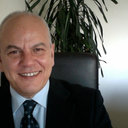Intradermal lymphoscintigraphy at rest and after exercise: a new technique for the functional assessment of the lymphatic system in patients with lymphoedema.
Mots clés
Abstrait
OBJECTIVE
The aim of this study was to evaluate the effect of implementing a new technique, intradermal injection lymphoscintigraphy, at rest and after muscular exercise on the functional assessment of the lymphatic system in a group of patients with delayed or absent lymph drainage.
METHODS
We selected 44 patients (32 women and 12 men; 15 of 44 with upper limb and 29 of 44 with lower limb lymphoedema). Thirty of 44 patients had bilateral limb lymphoedema and 14 of 44 had unilateral disease; 14 contralateral normal limbs were used as controls. Twenty-three patients had secondary lymphoedema after lymphadenectomy and the remaining 21 had idiopathic lymphoedema. Each of the 44 patients was injected with 50 MBq (0.3-0.4 ml) of (99m)Tc-albumin-nanocolloid, which was administered intradermally at the first interdigital space of the affected limb. Two planar static scans were performed using a low-energy general-purpose collimator (acquisition matrix 128 x 128, anterior and posterior views for 5 min), and in which drainage was slow or absent, patients were asked to walk or exercise for 2 min. A postexercise scan was then performed to monitor and record the tracer pathway and the tracer appearance time (TAT) in the inguinal or axillary lymph nodes.
RESULTS
The postexercise scans showed that (i) 21 limbs (15 lower and six upper limbs) had accelerated tracer drainage and tracer uptake in the inguinal and/or axillary lymph nodes. Two-thirds of these showed lymph stagnation points; (ii) 27 limbs had collateral lymph drainage pathways; (iii) in 11 limbs, there was lymph drainage into the deeper lymphatic channels, with unusual uptake in the popliteal or antecubital lymph nodes; (iv) six limbs had dermal backflow; (v) three limbs did not show lymph drainage (TAT=not applicable). TAT=15 + or - 3 min, ranging from 12 to 32 min in limbs with lymphoedema versus 5 + or - 2 min, ranging from 1 to 12 min in the contralateral normal limbs (P<0.001).
CONCLUSIONS
Intradermal injection lymphoscintigraphy gives a better imaging of the lymph drainage pathways in a shorter time, including cases with advanced lymphoedema. In some patients with lymphoedema, a 2-min exercise can accelerate tracer drainage, showing several compensatory mechanisms of lymph drainage. The effect of the exercise technique on TAT and lymphoscintigraphy findings could result in a more accurate functional assessment of lymphoedema patients.


